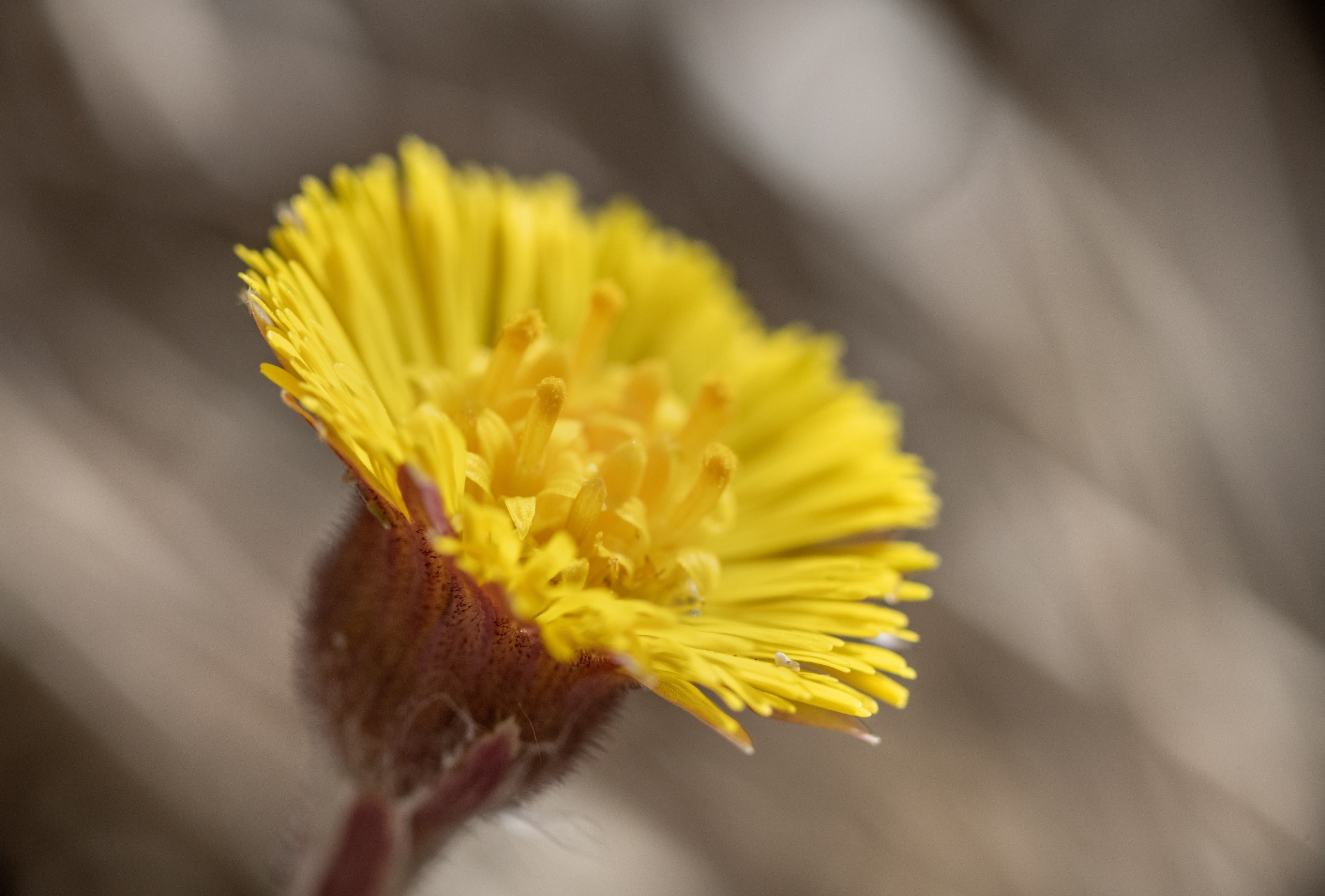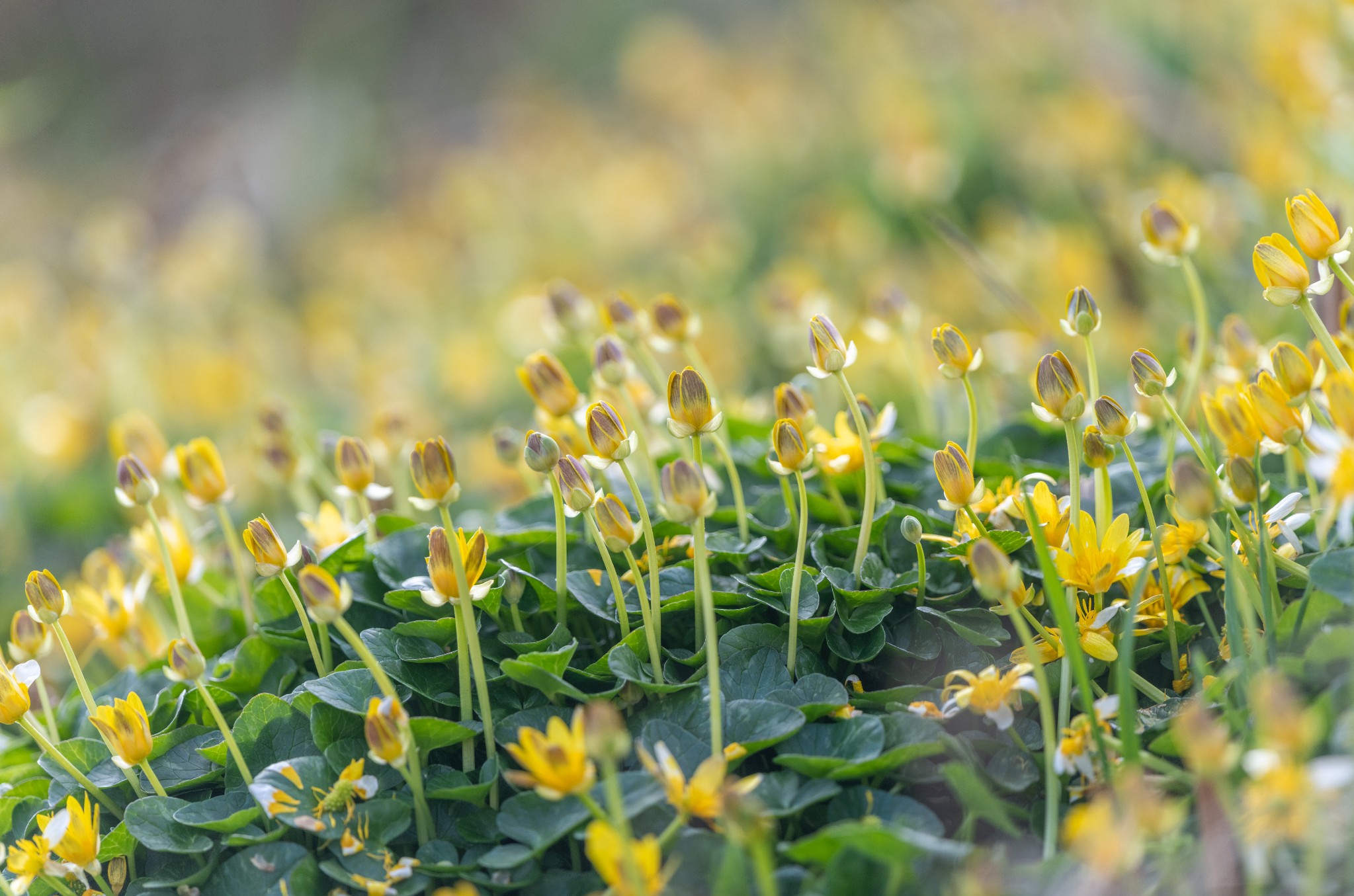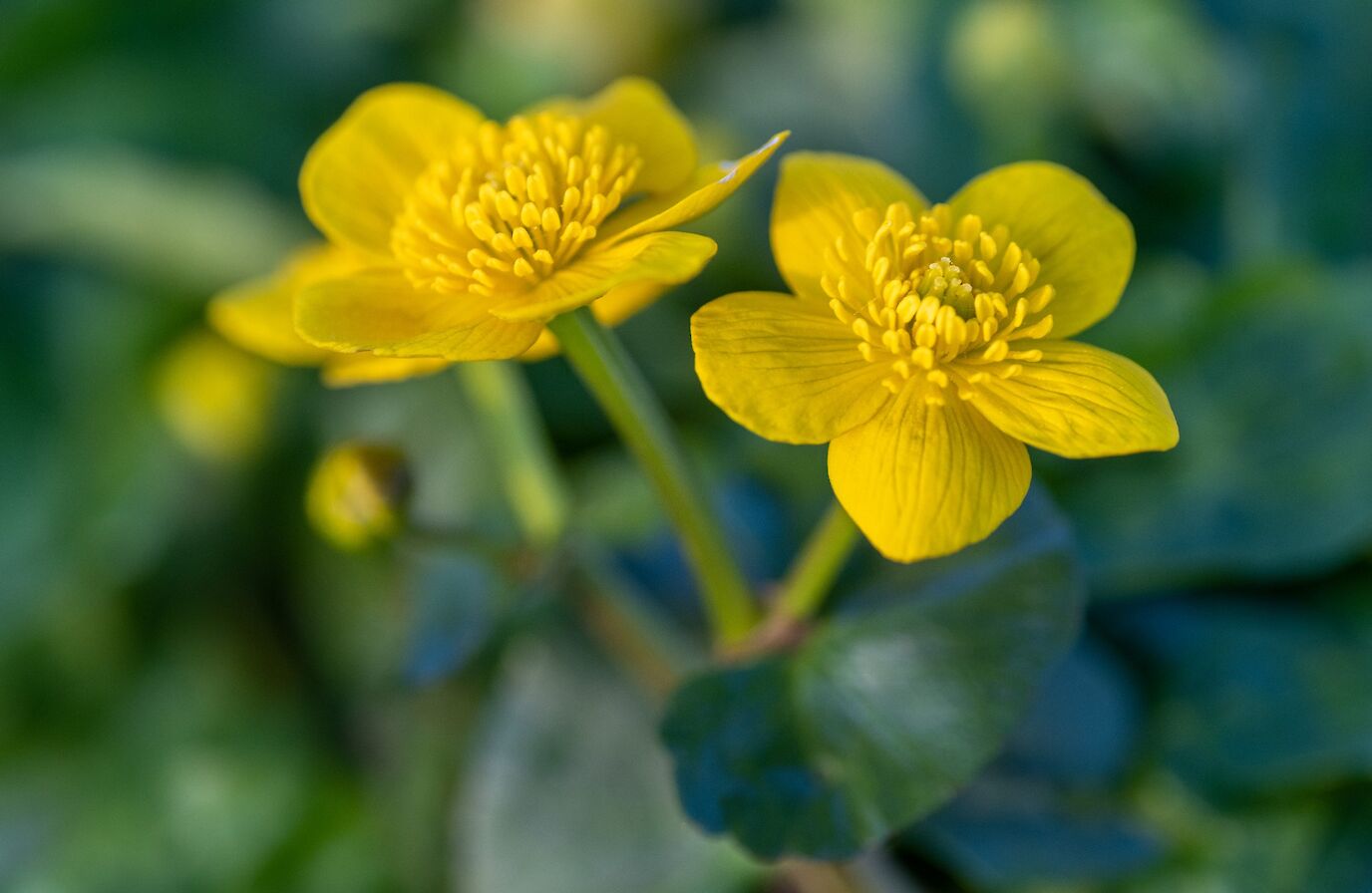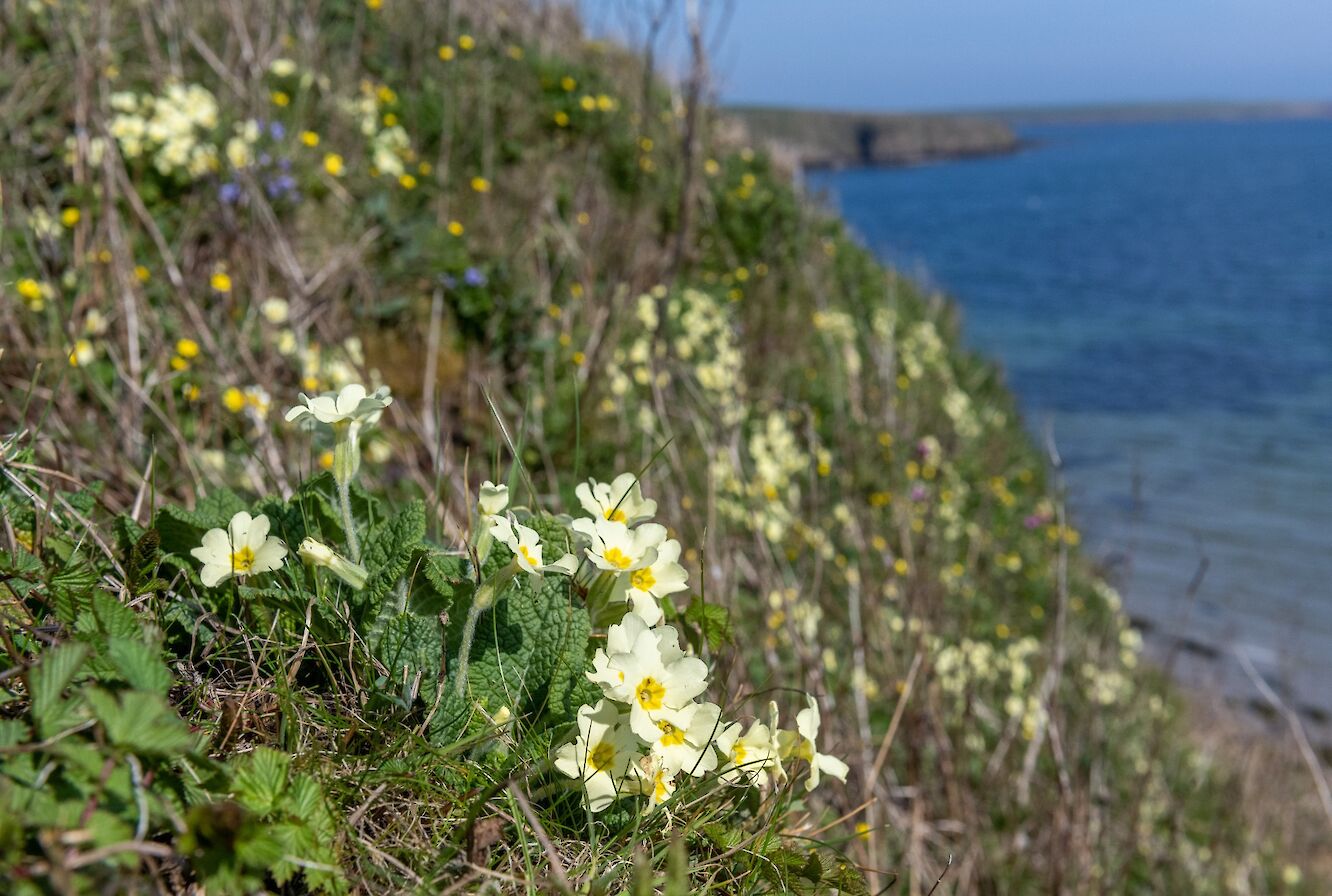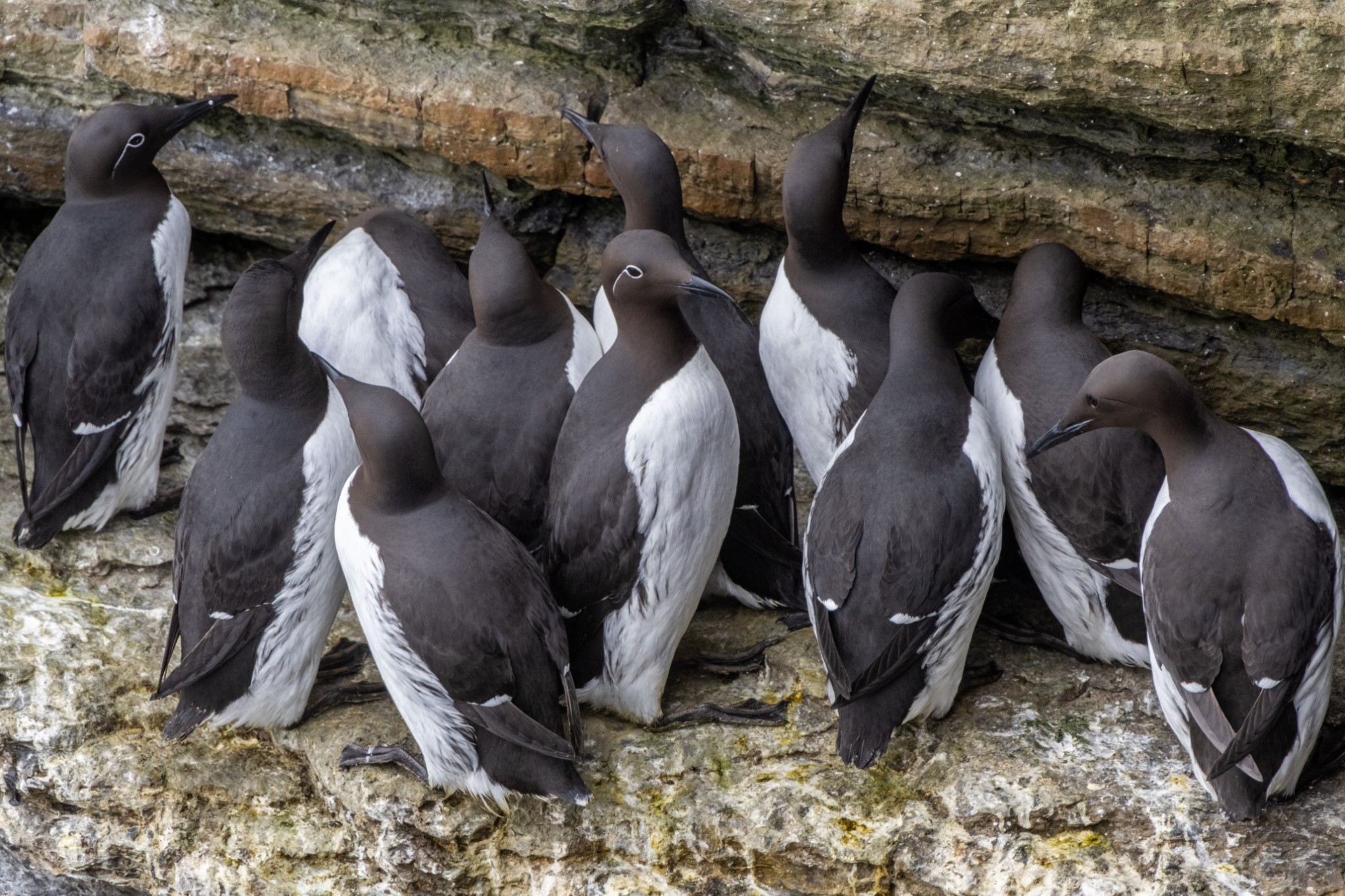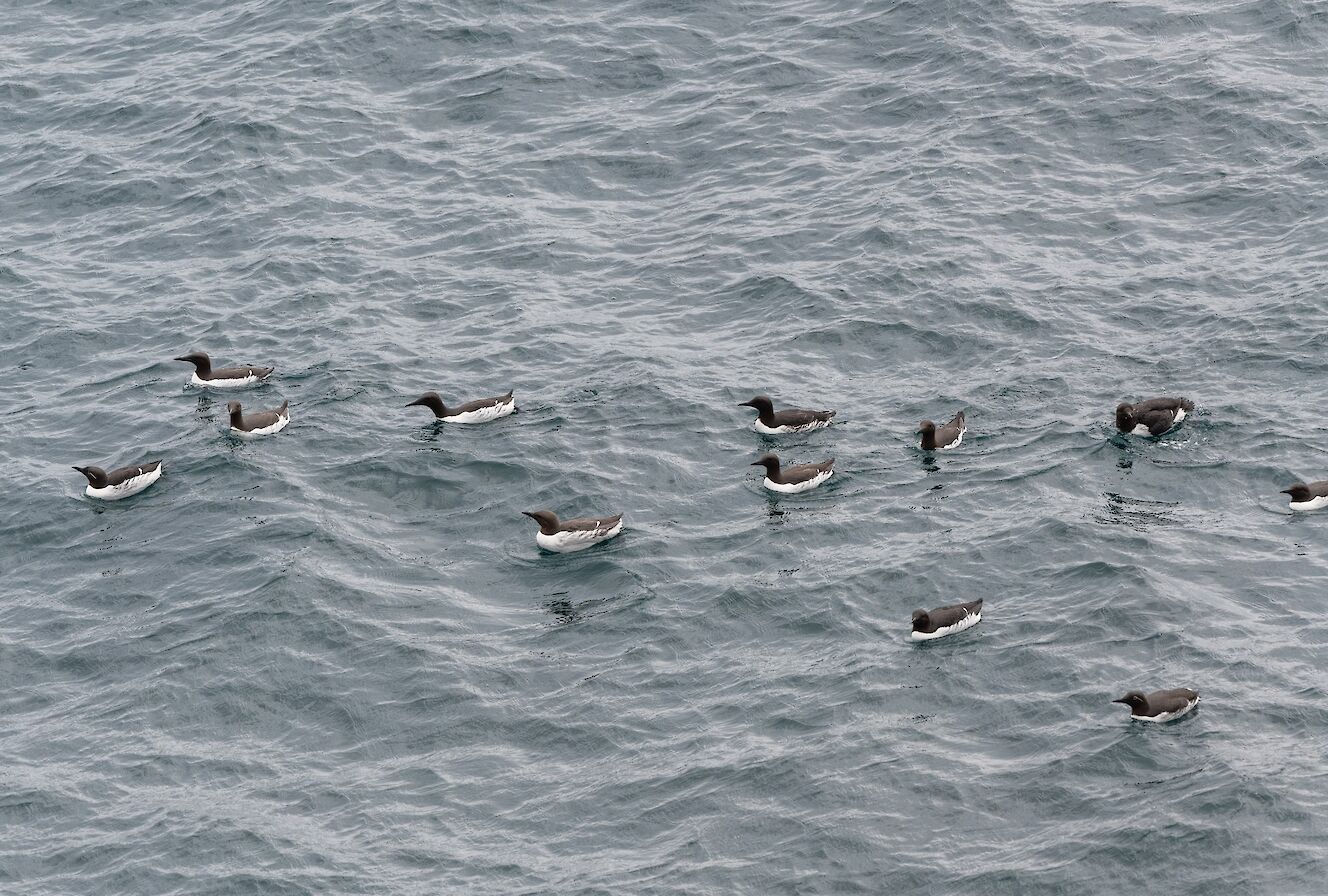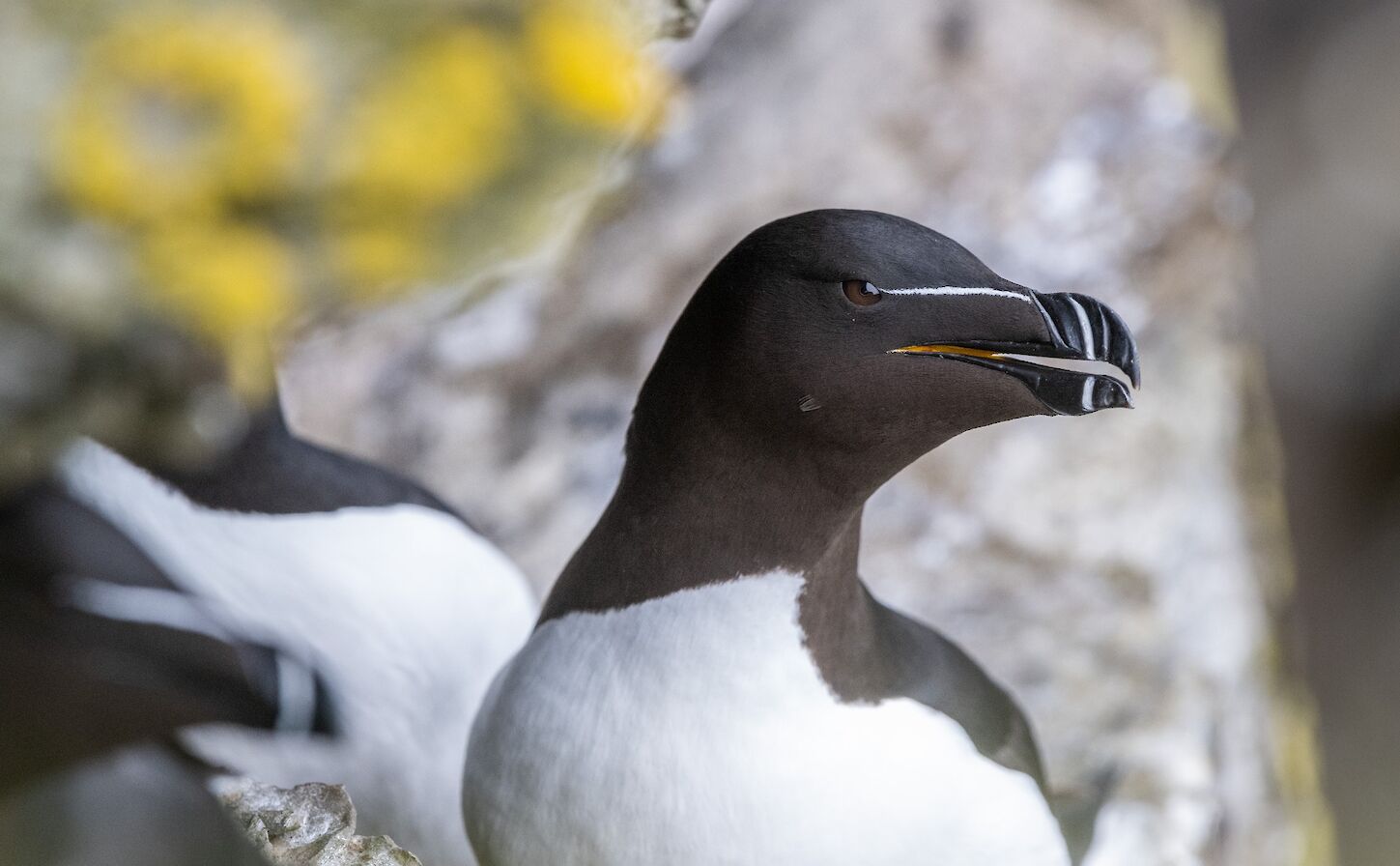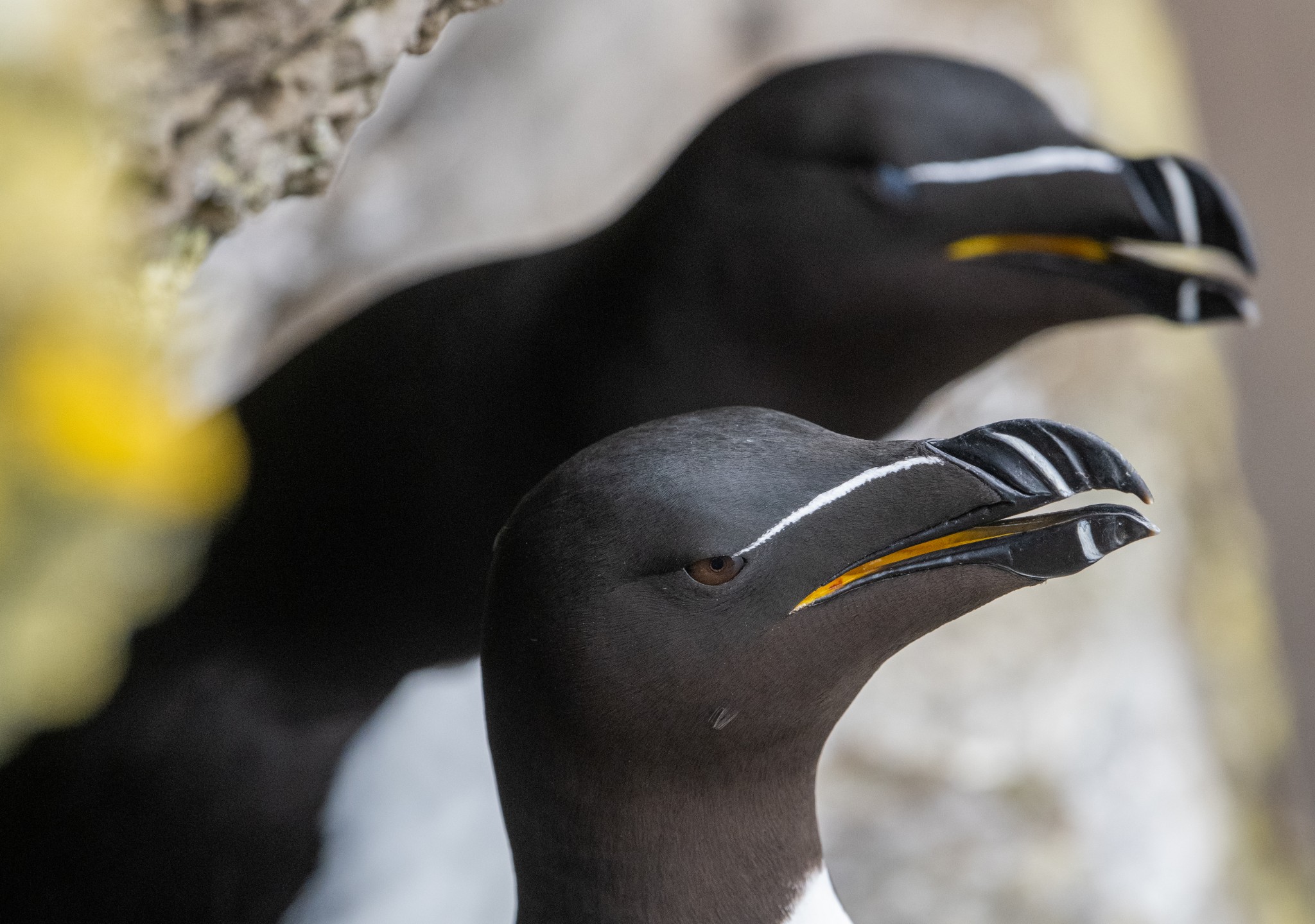There are hints of pink on the coast now as the flowers of thrift burst out from their cushions and red campion grow tall on hairy stalks. But it’s yellow that is the colour of early spring and it’s here now in profusion.
The rows of daffodils along roadside verges try to hog our attention but there is plenty of yellow flowers to be found elsewhere.
One of my favourites is colt’s-foot, often overlooked as just a dandelion - though dandelions are interesting in themselves as a welcome source of food for early insects. Both flowers are members of the daisy family and true, the colt’s-foot is quite dandelion-like, but the best way to confirm it isn’t by looking at the flower, but rather the stem which has purple-looking overlapping scales which cover the stem right up to the head.
Unusually the leaves of colt’s-foot develop once the flower has died and its shape gives the flower its name, of which there are many along a similar theme - foal foot, horse hoof, sow foot and calves’ foot! They seem to quite like broken ground such as that at the top of stony shores but the ones I photographed were deep within sand dunes on Glimps Holm.
Lesser celandine is on its way out now and past its best being one of the first flowers of the year. The vibrant shiny petals, of which there can be up to twelve per flower head, often fade to white as the season progresses. I try to photograph them in dull light rather than full sunshine as the shiny petals create hotspots and the highlights are difficult to prevent from getting blown out in terms of exposure. It is no wonder William Wordsworth wrote of the flower as being ‘bright as the sun himself’.
A flower not quite as bright yellow is the primrose. It’s more of a pale lemon but still beautiful. For me the toothed wrinkled leaves are as distinctive as the flowers themselves. Great profusions of them can be found on our grassy cliff faces as well as lining the banks of many burns in the county.
It’s likely to share these banks with a much less subtle flower, the marsh marigold. Big, bold and bright yellow, it thrives in wet and damp places and brings a welcome splash of colour to our loch-sides and wetland areas. One of the things I really like is seeing birds amongst marsh marigolds, a male teal or a redshank preening amongst the yellow flowers sets them off really nicely.
Funnily enough the two main bird species that I went looking for in South Walls recently also have a splash of vibrant yellow about them. It contrasts so brightly with their black and white plumage that it’s something of a surprise when you see it, though you’ll have to wait for the right moment when they open their beaks! I’m speaking of course about the common guillemot and the razorbill, two of our most charismatic seabirds and fortunately for us easy to see in locations all around Orkney.
Now is the perfect time to experience Orkney’s ‘seabird cities’, where the smells and sounds count as much as the sights. I tend to think of them with a photographer’s head on and so really divide the experience in two. If it’s a general day out to enjoy the big occasion then two sites stand head and shoulders above the rest, the RSPB reserves of Marwick Head in Birsay and Noup Head in Westray. Although Orkney’s seabirds have suffered terrible declines in line with other Scottish colonies (though it’s not a straightforward picture), there are still 10,000 guillemots to be found on the towering cliffs at Marwick Head. The beauty of seeing the guillemots at Noup Head is that they are mixed in with the successful gannet colony.
But as spectacular as these sites are, you won’t get any kind of close-up images in terms of photography. For those you need to choose a smaller site which generally hold fewer birds. You can find these places all over the isles and no doubt folk have their ‘secret’ places too. Two readily accessible places come in the form of North Hill in Papa Westray (again an RSPB reserve and in my opinion the best one) and Cantick Head in South Walls.
North Hill allows you close encounters with puffins, tysties and common guillemots, and is particularly good for razorbills, not to mention Arctic and great skuas. For me though there is something really special about the coastline of South Walls. My grandparents lived in Hoy and so our childhood summers were spent there. You know when you drive off the ferry and you immediately feel you’re in the right place? For me that is Hoy, though for those that live in the island it’s really the north that is referred to as Hoy. Cantick lies on the east side of adjoining South Walls.
The Scottish Wildlife Trust reserve of the Hill of White Hamars is to be found further west from Cantick, itself a spectacular coastline and rich in wildflowers and butterflies as the summer progresses. But I’ve chosen the cliffs at Cantick itself in order to see the guillemots and razorbills. There is easy parking off to the right just after the little beach at the head of Kirk Hope Bay. Park here rather than at the lighthouse and you can enjoy a circular walk where the dry-stone dykes are covered in a profusion of ramalina lichens. Once past the lighthouse on your way back, simply walk along the shore of the bay where you’re likely to see eider ducks, ringed plover and oystercatchers.
I would encourage you to at first just sit down and look out to sea. The expanse of the Pentland Firth stretches out before you with the uninhabited island of Switha to the left and the island of Swona off to the south east. Cantick Head was the location of some very good orca sightings last year so you never know your luck.
From here I can see ten great northern divers all in a row, some more advanced in their molt to summer plumage than others. During May the ferry journey from Houton to Lyness is the best place in Orkney to see these beautiful birds. By then they will be resplendent in their striking summer gear.
But there are bigger rafts of birds here too and they comprise flocks of razorbills and guillemots with the odd black guillemot and shag. In fact, these birds aren’t simply loafing, there’s clearly food here and a short-lived frenzy ensues on the surface. Guillemots and razorbills are diving below, gulls and fulmars are bobbing beneath the surface and the commotion has attracted the unmistakable sound of the kittiwake.
Back on the cliffs and there is some classic common guillemot behaviour on the dark ledges below. Groups of around twenty birds are all huddled together, jostling for space. This dense packing together of birds is a result of the guillemot having the smallest known nesting territory of any bird and it really does look like standing room only.
The birds will lay a single beautiful turquoise, pear-shaped egg which both parents will incubate. When the chick is born is where the safety of these tightly packed numbers come into play. Herring gulls in particular are adept at picking off seabird chicks from the cliffs but they face much more in the way of a challenge from an array of sharply pointed beaks in these dense colonies.
Out of all the seabirds I think it’s the call of both guillemots and razorbills that can help your photography. Listen out for a strange grating noise, almost like a nail being drawn across a comb but more guttural. This is the sound razorbills make prior to and during mating. It’s amazing once you hear and recognise it how often you can spot a pair of razorbills mating.
As I’m watching the guillemots it all appears to be fairly bad tempered. A pair has just mated and a new bird lands nearby. Immediately it is subject to a sustained attack, repeatedly being ‘stabbed’ by the beak of the other. There are short interludes of truce when both birds preen for ten seconds or so then go at it again. Presumably this tiny area of cliff is coveted and already spoken for. In very basic terms I suspect this behaviour means ‘get lost’!
Out at sea another pair of guillemots are fighting ferociously on the water, leaping over each other, stabbing away, wings flapping and splashing. I’ve seen razorbills do this too. On one occasion two razorbills had their beaks intertwined and refused to let go, twisting as much as they could, and it looked really quite painful. Such was their determination that during the fight they fell off the cliff ledge and carried on once they had landed on the sea.
When I said their plumage was black and white earlier really I was doing both birds a disservice. True, the razorbill appears darker than the guillemot, which in the right light can appear almost chocolate in colour. You may notice a guillemot with a sublime looking white eye ring amongst the more regular looking birds. These birds are known as being bridled, an example of dimorphism in the species.
What is certainly true early in the season is that their ‘whites’ look clean and crisp. Give it a few weeks and they will be matted with the result of so many birds living in such close proximity. Looks for the groups of guillemots then cast your eyes a little wider in order to see the razorbills - they prefer the quieter corners, nooks and crannies.
I notice one guillemot carrying a small stone in its beak. I’ve only ever seen this behaviour once before and it repeatedly bobs its head up and down presenting the stone at the feet of its partner before picking it up again. Guillemots will present a single fish to its mate as part of their courtship and I suspect this is something similar as they don’t build nests.
In fact, most of the birds in this group are nodding their heads forward. It’s comical and I just sit and watch a while, enjoying the show.
Find out more about Raymond’s work via his official website. You can also find him on Facebook, Twitter and Instagram.
